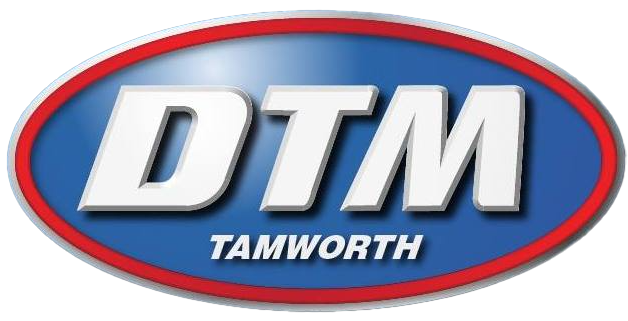8 Golf Cart Safety Guidelines for New Drivers
DTM Tamworth • July 30, 2025
Planning to operate a golf cart for the first time? Whether you’re managing resort transport, navigating a school campus, or preparing for daily rounds on the golf course, knowing how to handle a golf cart safely is essential.
Golf carts are becoming more common in Tamworth for both recreational and practical use. Their compact design makes them convenient for short-distance travel, but they still require care, awareness, and safe driving habits. In this blog, we’ll cover the fundamental safety guidelines for anyone new to driving golf carts, with a focus on safe operation in real-world settings.
1. Operator Awareness & Training
Before driving, every new operator should receive a basic induction or training session. This should cover key controls, braking systems, and turning mechanisms. Even though golf carts may not require a licence in many private environments, they should still be treated with the same level of care as a road vehicle.
Training should include:
- Starting, stopping, and accelerating smoothly.
- Navigating turns without sharp jerks.
- Braking at a safe distance.
- Checking blind spots and surroundings.
- Parking on flat, stable ground with the brake engaged.
Golf courses, aged care facilities, or education campuses should consider assigning a supervisor or instructor for new staff members or guests using golf carts for the first time.
2. Understand the Legal Use of Golf Carts
In New South Wales, golf carts are typically restricted to private land, golf courses, or designated areas within private estates. They are not allowed on public roads unless specifically registered and approved for road use under conditional registration schemes.
Before operating a golf cart in Tamworth or its surrounds, check whether the area permits golf cart use and whether any local policies apply. This is especially relevant for event organisers or business owners using carts for shuttling guests across large venues.
Do not operate a golf cart:
- On public roads without conditional registration.
- Under the influence of alcohol or drugs.
- In areas not designed for vehicle use (e.g., footpaths, gardens).
- If there are more passengers than seats.
3. Check Your Surroundings
Golf carts operate at lower speeds than cars, but visibility and awareness are still critical. Always scan your surroundings before moving, especially in shared spaces with pedestrians, children, or other vehicles.
Before starting the cart, check:
- The area behind and beside the cart.
- Overhead clearances for trees or canopies.
- Terrain slopes, water hazards, or loose gravel.
- That no one is standing too close or trying to board.
Golf carts used in schools, resorts, or outdoor events often share paths with foot traffic. A slow, cautious approach in crowded areas is always safer than attempting to overtake or swerve.
4. Operate at a Safe Speed
Golf carts are not designed for fast movement. Excessive speed increases the risk of tipping—especially during turns or when carrying multiple passengers. Most models are limited to 20–25 km/h, which is suitable for flat terrain.
Maintain slower speeds when navigating:
- Corners or tight turns.
- Slopes or gradients.
- Wet or muddy ground.
- Areas with poor visibility.
Avoid abrupt movements or turning sharply at speed. These actions may cause instability, particularly in lighter carts or those with a raised centre of gravity.
5. Use Caution on Inclines & Uneven Terrain
Even though golf carts are low-speed vehicles, they can lose control or stall on steep terrain. If you are travelling up or down a hill:
- Drive straight up or down rather than diagonally.
- Keep your speed steady and avoid stopping mid-slope.
- Apply brakes gently when descending.
- Never reverse downhill without clear rear visibility.
In locations like golf courses or rural venues around Tamworth, soft ground or grassy inclines are common. Always approach these areas with caution and avoid overloading the cart when navigating them.
6. Only Carry the Recommended Load
Every golf cart has a maximum capacity in terms of passengers and load weight. Exceeding this can affect steering control, braking distance, and stability.
Follow these guidelines:
- Do not allow passengers to stand while the cart is moving.
- Avoid placing heavy objects on the roof or canopy.
- Distribute weight evenly across the seats or tray.
- Never use rear footboards or bumpers as standing areas.
Overloaded golf carts are one of the leading causes of tipping or brake failure. This can be especially hazardous in settings like aged care centres or schools where vulnerable individuals may be transported.
7. Maintain Safe Parking Practices
Always park on level ground with the brake engaged. If the cart is parked on a slight incline, use wheel chocks or turn the wheels away from the slope. Leaving the cart unsecured can lead to unexpected movement or property damage.
When parking a golf cart:
- Turn off the ignition.
- Engage the parking brake fully.
- Remove the key (especially in shared environments).
- Avoid blocking walkways or emergency access paths.
Resorts, golf clubs, and institutions should clearly mark designated parking areas to reduce the chance of congestion or misuse.
8. Know When to Report Mechanical Issues
While this blog avoids discussion of DIY repairs, it’s still important for operators to report any issues immediately. If a golf cart displays odd behaviour—such as lag in braking, difficulty starting, or odd sounds during operation—it should be inspected by a technician.
Common signs to report include:
- Sluggish acceleration.
- Soft or unresponsive brakes.
- Loose steering wheel.
- Warning indicators or battery issues.
- Visible damage to wheels, seats, or canopy.
In workplaces or facilities where multiple users share carts, a logbook or reporting sheet can help track faults and schedule professional servicing.
Upgrade Your Fleet with Golf Carts in Tamworth
Golf carts near you can offer practical and convenient mobility in a wide range of settings, from Tamworth golf courses to large commercial properties. But like any vehicle, they must be operated with care. By following basic safety procedures—such as limiting speed, understanding legal use, and respecting load limits—first-time drivers can help maintain a safer, more efficient environment for all users.
At DTM Tamworth, we supply high-quality golf carts for commercial, recreational, and institutional use. Whether you’re a course manager, facility supervisor, or event organiser, our team can help you select the right model for your needs. Contact us today to learn more about our available options and get started with a safer, smoother driving experience.













